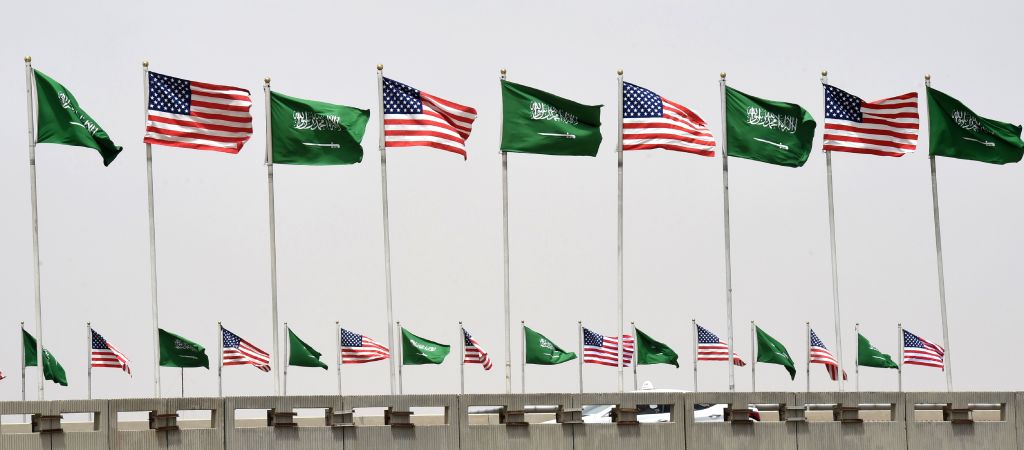President Donald Trump prides himself on being unpredictable and, thus, no one knows what to expect of his first trip abroad. But when it comes to the first stop, Saudi Arabia, we can be sure it will be very unlike the visits of past US leaders to Riyadh when it comes to one vital topic: oil.
For decades, petroleum — specifically Saudi oil production — was high on the list of American talking points. But this time around, to the extent that oil figures into the conversation, it will not be about Saudi production, but about investments, joint ventures and the upcoming (maybe) initial public offering of the state-owned oil behemoth Saudi Aramco.
This departure from the past is not — as many Americans may think — because the US no longer imports much oil from Saudi Arabia now that the shale boom has made America an energy superpower again. In fact, despite its own energy prowess, the US continues to import a steady amount of Saudi crude. If one looks from the financial crisis onward, as a percentage of overall US imports (which have declined significantly), Saudi Arabia’s share is on a slightly positive trajectory.
US imports of Saudi crude have not really fluctuated with the ups and downs of the political relationship.
Oil imports from Saudi Arabia fell markedly in 1985 on account of the huge Saudi production cuts in the 1980s, yet the bilateral relationship remained on firm footing. From the Gulf War in 1991 until 2009, US imports of total crude and oil products from Saudi Arabia remained stable, despite the volatility in relations. They were approximately 1.4 million barrels a day following the Iraqi invasion of Kuwait in 1990, when President George H. W. Bush told Prince Bandar, Saudi Arabia’s ambassador to Washington, “If you ask for help from the United States, we will go all the way with you.”
And they were at similar levels after the attacks of Sept. 11, 2001, when relations were so tense that some US soldiers who had received medals from the Saudi government during the Gulf War reportedly returned them in protest of the primarily Saudi group of terrorists responsible for the tragedies of that day.
In any case, even when oil markets were at their tightest, American leaders never visited Saudi Arabia to ask the kingdom to export more oil to the US. Rather, they would entreat the Saudis to increase overall oil production and add it to the global market — easing pressures on the price, which is set on the global market.
At the moment, such a conversation would be counterproductive: global markets are oversupplied and many view the oil price as too low to be sustainable, although trends are moving in a direction which would firm it up.
There has been a big turn of events, with the US now producing more crude and natural gas liquids.
But the US also loses some leverage now that it is no longer the Saudis’ largest customer. Asia has become far more important as a market for Saudi crude than the Americas. This trend will only strengthen in the coming years.
While the question of leverage is tricky, one thing is clear: The lack of need to press Saudi Arabia to step up oil production, or to increase its capacity to produce more in the future, opens up a big space for Trump and the American delegation to talk about other subjects, particularly critical regional issues and how the US can help Saudi Arabia in its own pressing quest for economic reform.
(Bloomberg)
